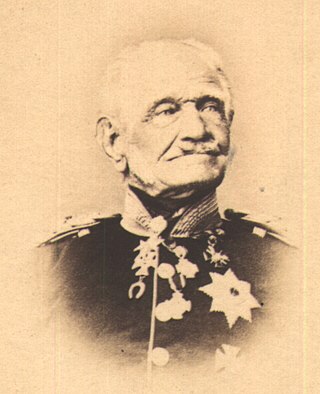
Friedrich Heinrich Ernst Graf von Wrangel was a Generalfeldmarschall of the Prussian Army.

The Battle of Sehested was fought between Danish and Russian-Prussian-British troops at Sehested on 10 December 1813 during the War of the Sixth Coalition. The Danish Auxiliary Corps, which fought on the side of the French defeated the coalition forces commanded by Major General Ludwig von Wallmoden-Gimborn.
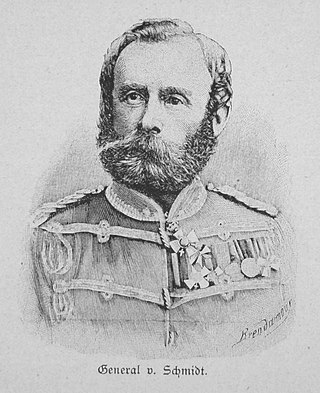
Karl von Schmidt was a Prussian cavalry general.

The Royal Prussian Army served as the army of the Kingdom of Prussia. It became vital to the development of Prussia as a European power.
This is an order of battle of the French and German Armies at the beginning of the Franco-Prussian War in 1870.

The Battle of Rocquencourt was a cavalry skirmish fought on 1 July 1815 in and around the villages of Rocquencourt and Le Chesnay. French dragoons supported by infantry and commanded by General Exelmans destroyed a Prussian brigade of hussars under the command of Lieutenant Colonel Eston von Sohr.
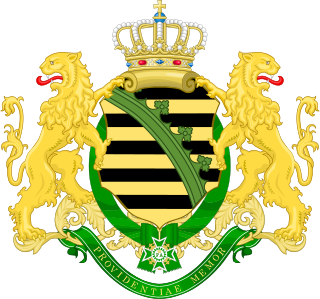
The Royal Saxon Army was the military force of the Electorate (1682–1807) and later the Kingdom of Saxony (1807–1918). A regular Saxon army was first established in 1682 and it continued to exist until the abolition of the German monarchies in 1918. With the formation of the Confederation of the Rhine by Napoleon the Royal Saxon Army joined the French "Grande Armée" along with 37 other German states.

Anton Wilhelm von L'Estocq was a Prussian cavalry general best known for his command of the Prussian troops at the Battle of Eylau.

Eduard Ernst Friedrich Hannibal Vogel von Fal(c)kenstein was a Prussian General der Infanterie.

Ludwig Georg Thedel Graf von Wallmoden was an Austrian General of the Cavalry, best known for his training of light infantry and the refinement of the Tirailleur system. As a grandson of George II of Great Britain and first cousin of George III, he is perhaps the only individual from that generation to have been photographed, within the broader British royal family.
Friedrich August Peter von Colomb was a Prussian general.

The 10th (Magdeburg) Hussars Regiment (German: Magdeburgisches Husaren-Regiment Nr. 10) were a Prussian Light cavalry regiment of the IV Corps that was formed in late 1813 during the War of the Sixth Coalition against Napoleon after the Battle of Leipzig. The Hussars were a distinctively dressed light cavalry of East European origin. The 10th Hussars were stationed from 1814 to 1884 in Aschersleben and after 1884 in Stendal. They fought in 1866 at the Battle of Königgrätz and later in World War I.

The Battle of Frohnhofen or Battle of Laufach took place on 13 July 1866 as part of the Main Campaign of the Prussian Army in the Austro-Prussian War. In a battle lasting several hours, the Prussian 26th Infantry Brigade repulsed attacks by the 3rd (Hessian) Division of the VIII. Corps of the North German Confederation, with the Hessians suffering heavy losses. It thus secured the Spessart crossings and created favorable conditions for the Battle of Aschaffenburg around the Main crossing the next day.

The Battle of Hundheim took place during the Austro-Prussian War as part of the Campaign of the Main on 23 July 1866 between the combined forces of the Prussia and Saxe-Coburg and Gotha against the armies of Baden.
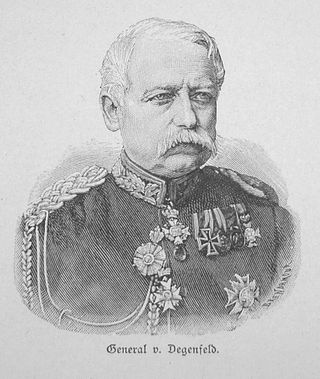
Alfred Emil Ludwig Philipp Freiherr von Degenfeld was a Badensian-Prussian general and a member of the Reichstag.
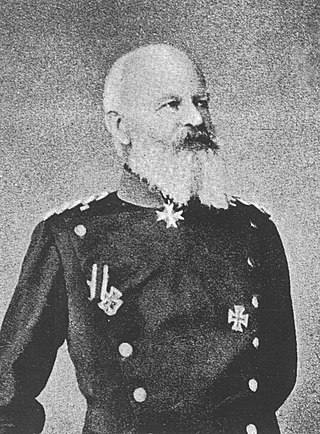
Theodor Alexander Viktor Ernst von Schoeler was a Prussian General of the Infantry who served in the Austro-Prussian War and the Franco-Prussian War through several battles.

The Evacuation of Fredericia was an event during the Second Schleswig War which began when Prussian and Austrian artillery shelled the fortress on March 20, 1864, with their artillery. When the Danish evacuated from the fortress which marked the end of Danish control of Jutland.

Cai Ditlev Hegermann-Lindencrone was a Danish general and politician who was the main Danish commander at the Battle of Vejle during the Second Schleswig War as well as the personal adjutant general of Frederik VII. He was also the father of Johan Hegermann-Lindencrone and Fritz Hegermann-Lindencrone.
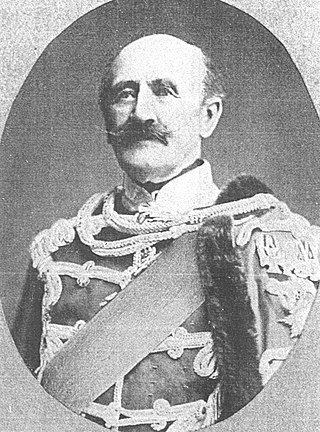
Otto Rudolf Benno Hann von Weyhern Sr. was a Prussian General of the Cavalry during the First Schleswig War, the Austro-Prussian War and the Franco-Prussian War. He commanded the 2nd Cavalry Division during the Battle of Königgrätz.
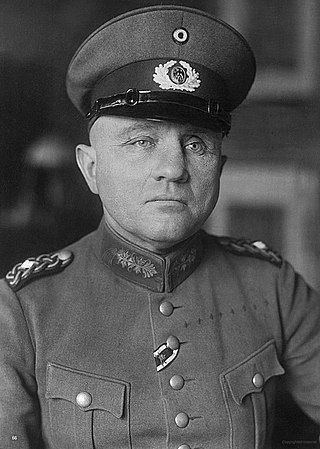
Hugo Max von Kayser was a German General of the Cavalry of World War I. He was known for being a major military figure of the Reichswehr after the war's conclusion, commanding the 2nd Cavalry Division.


















